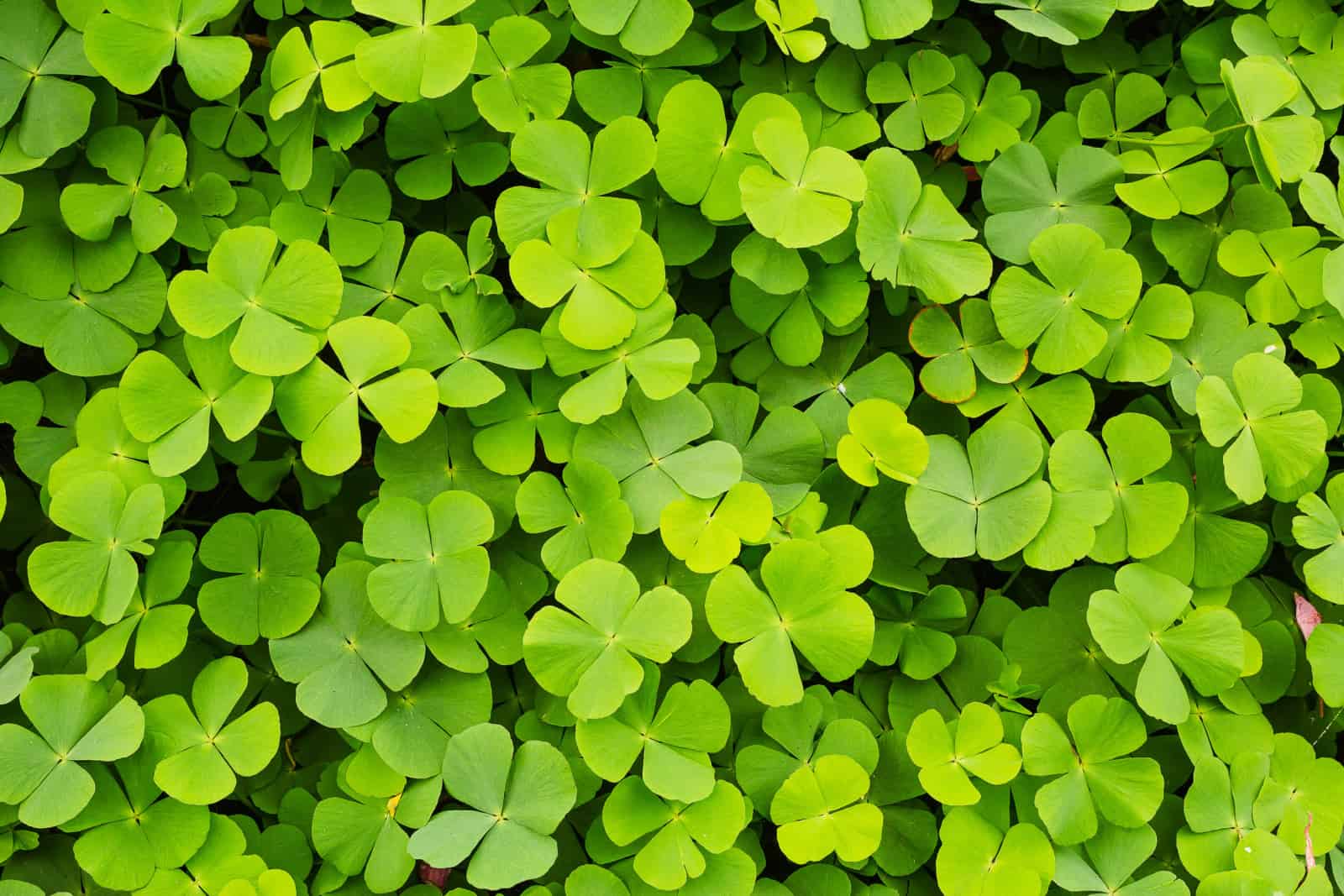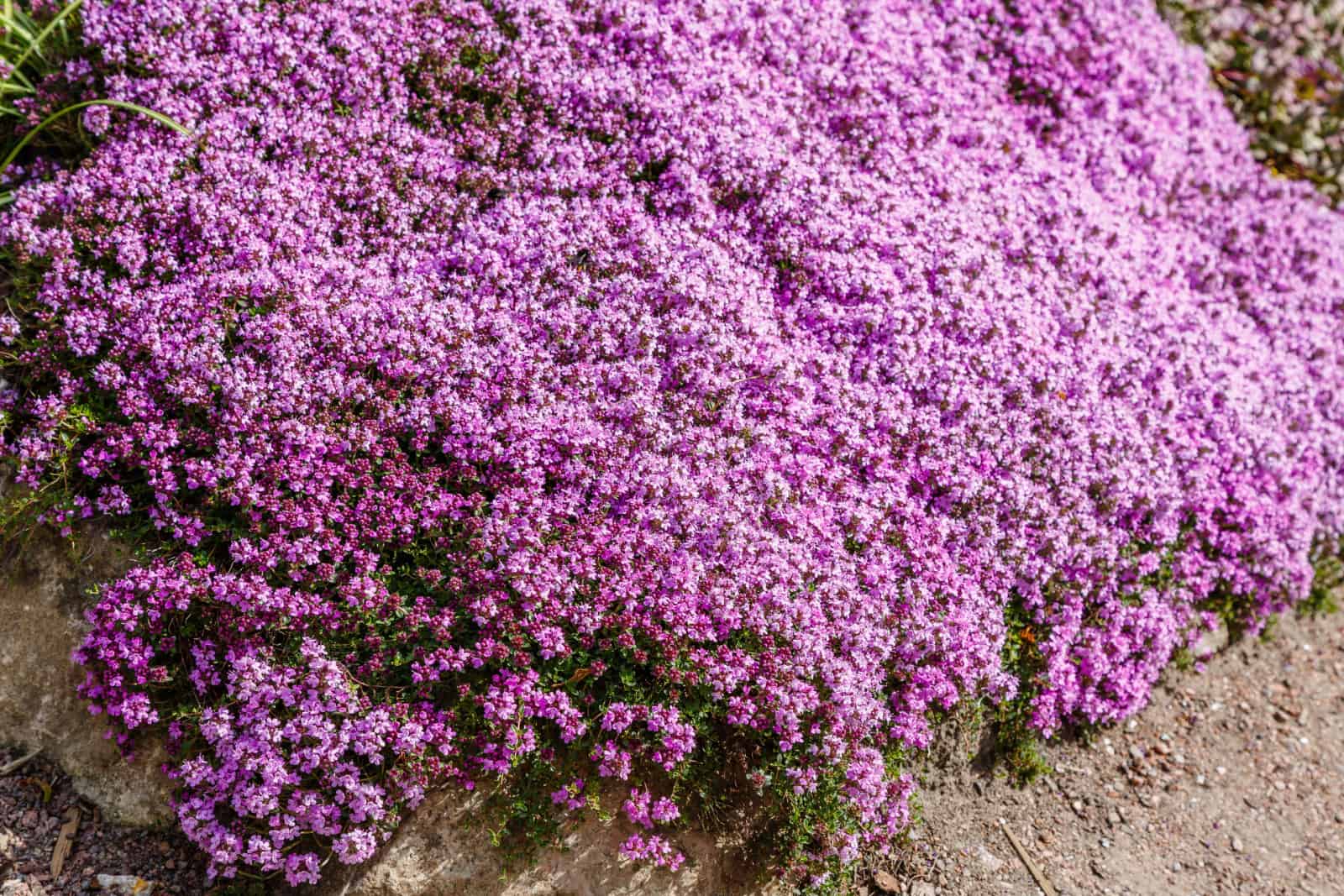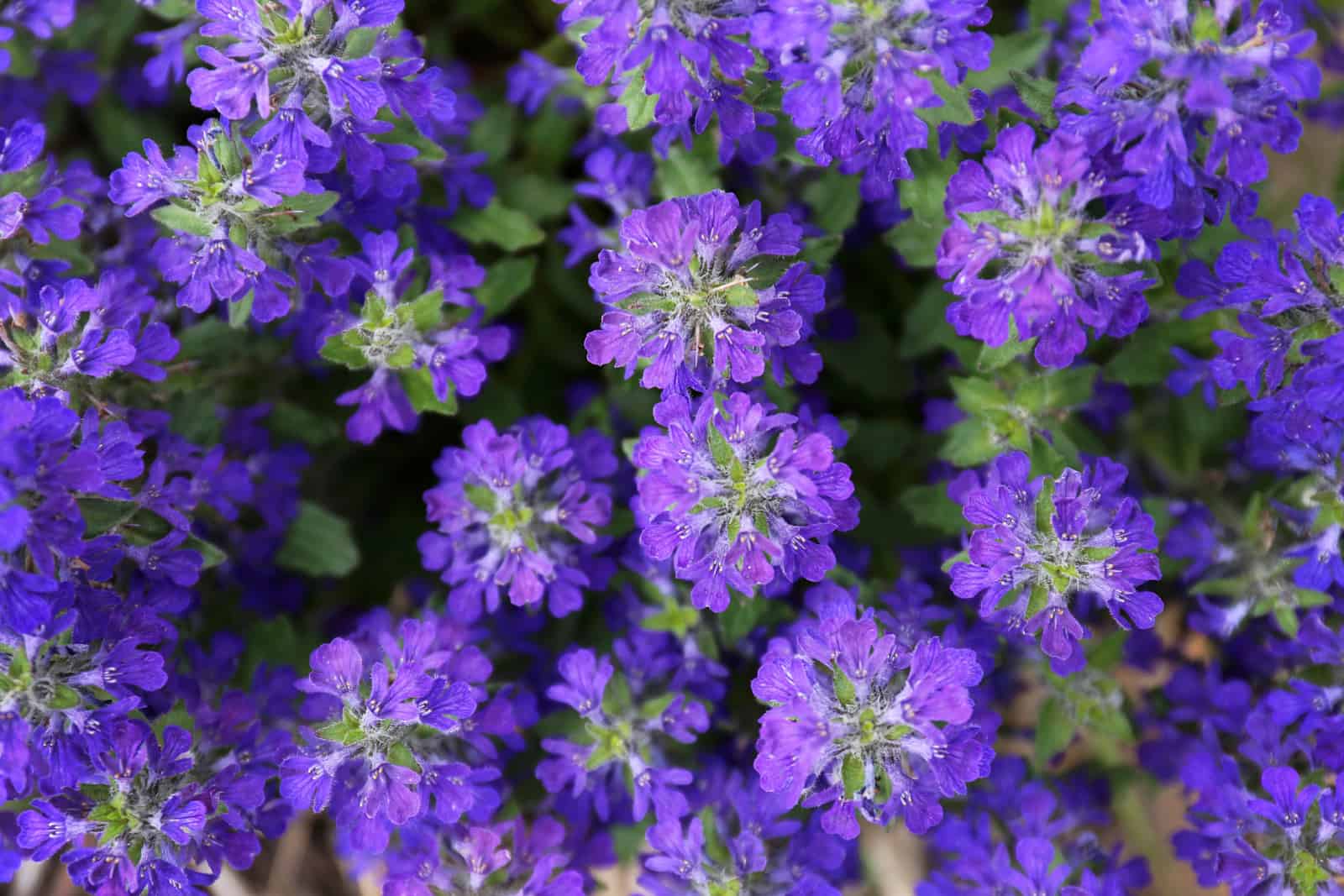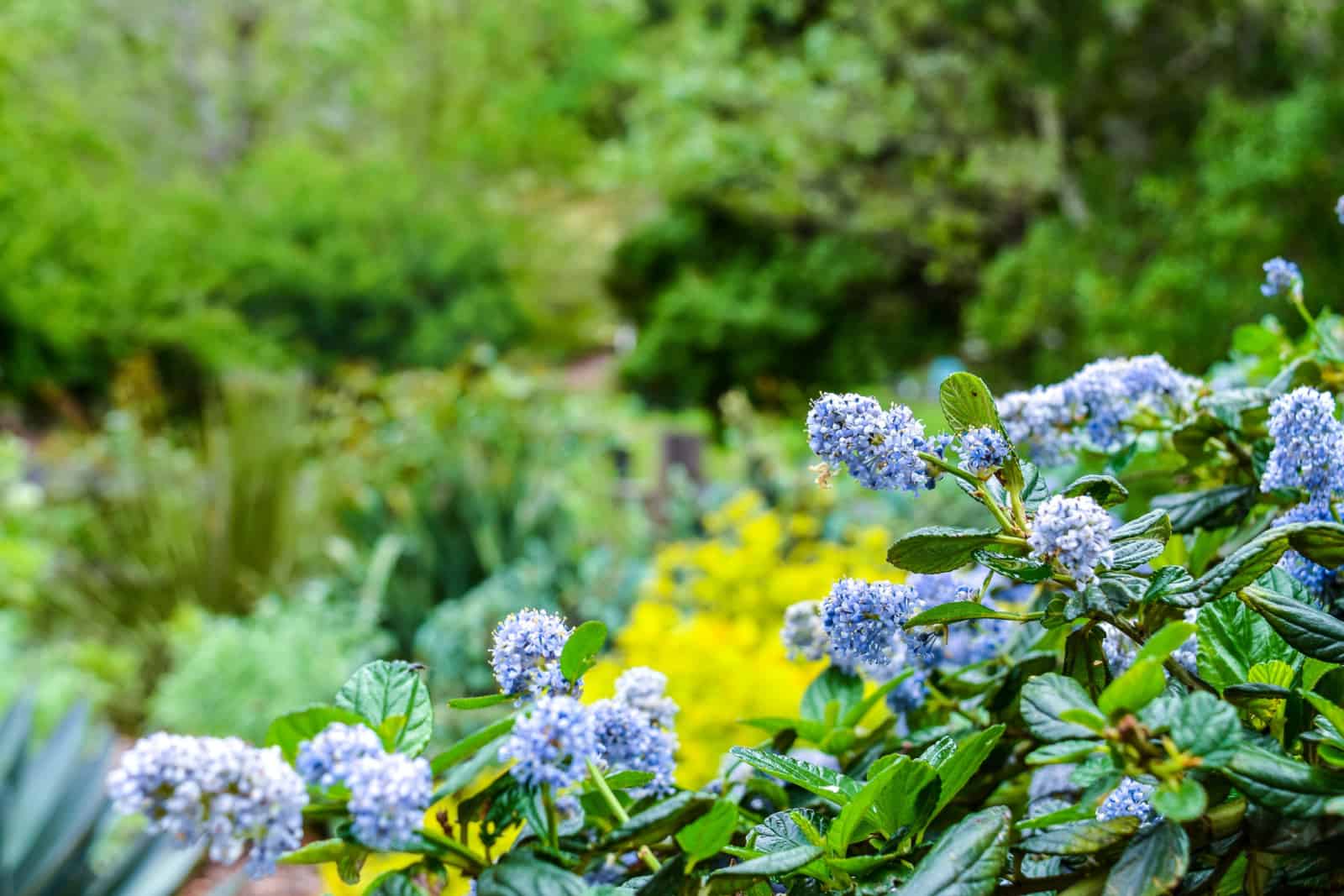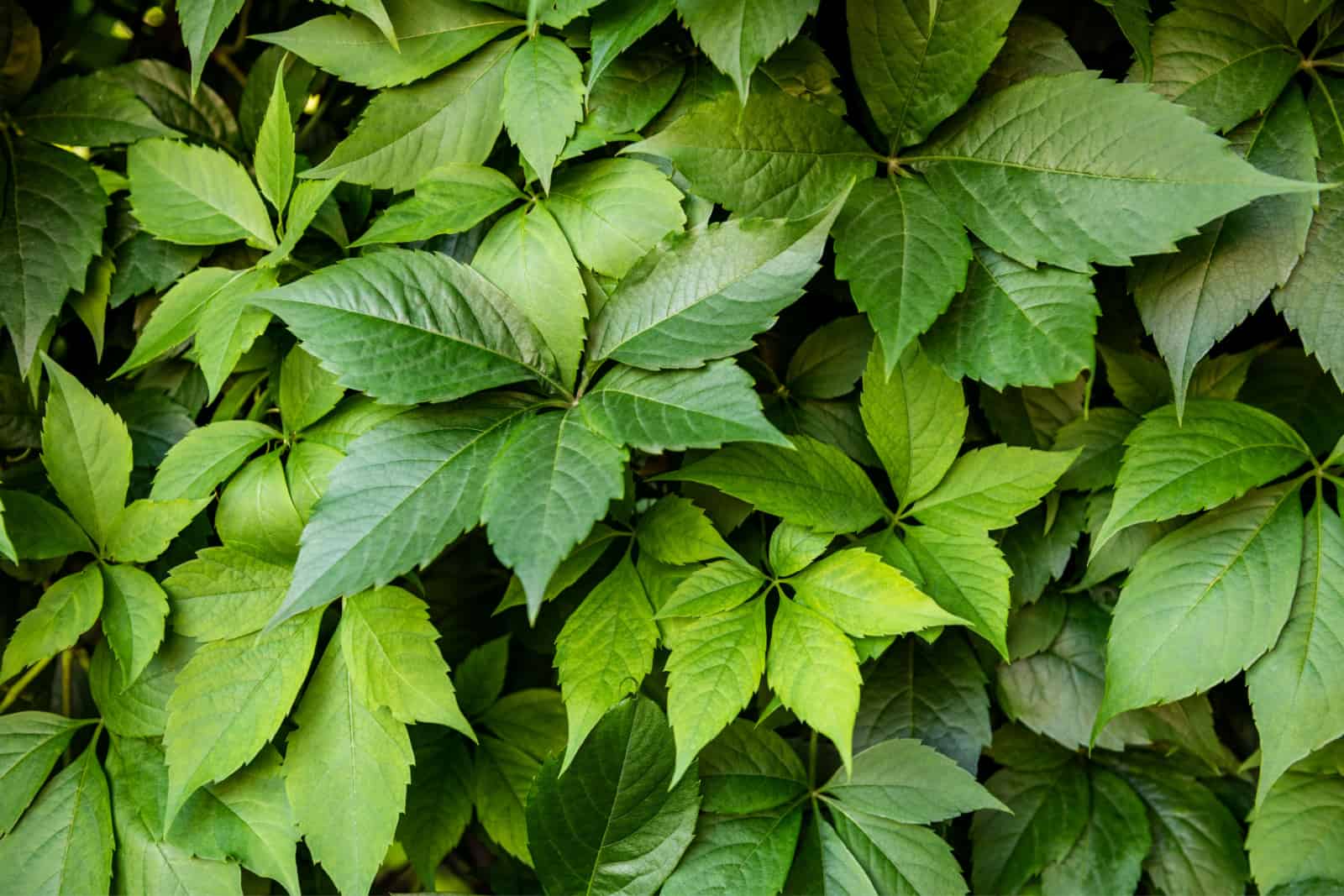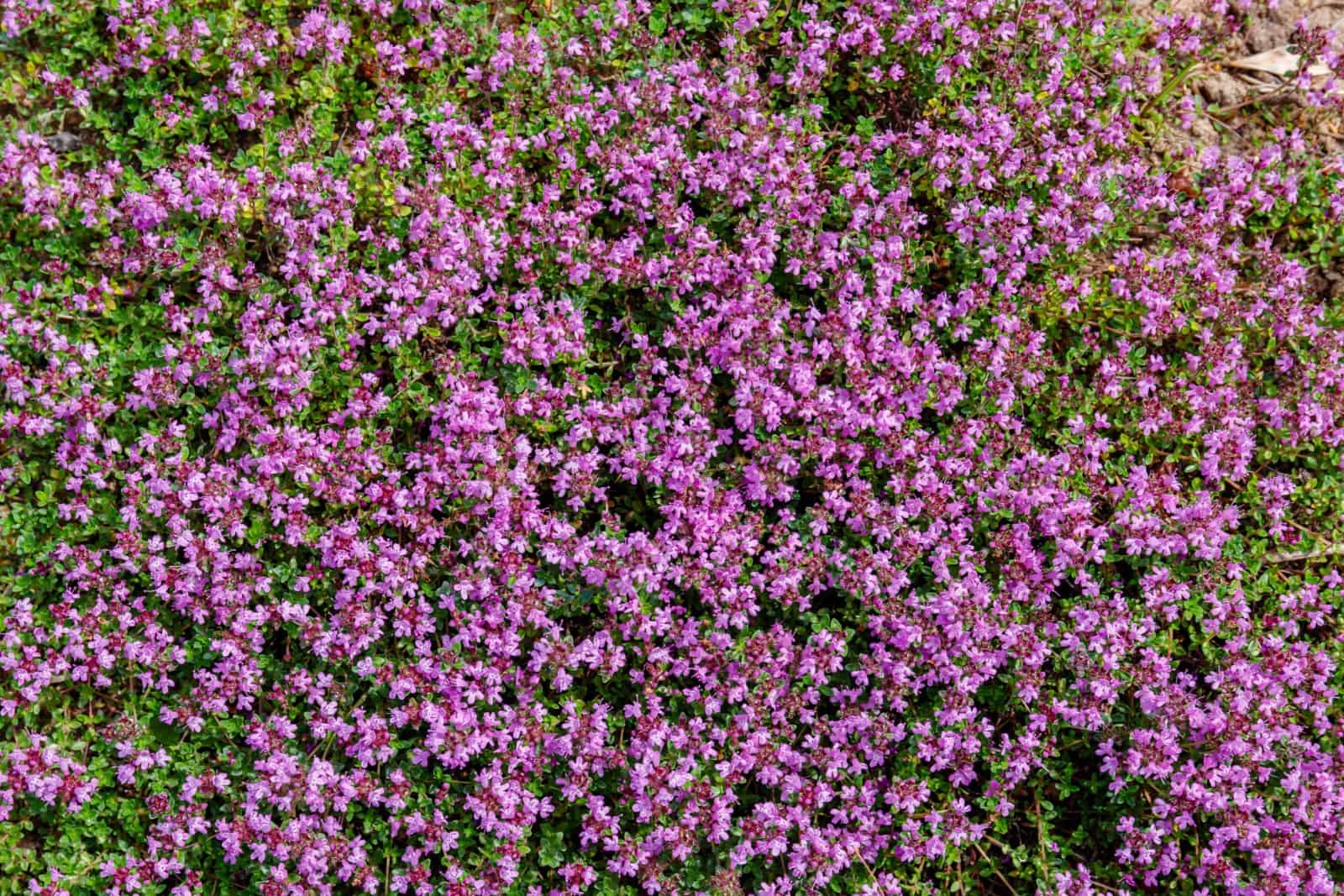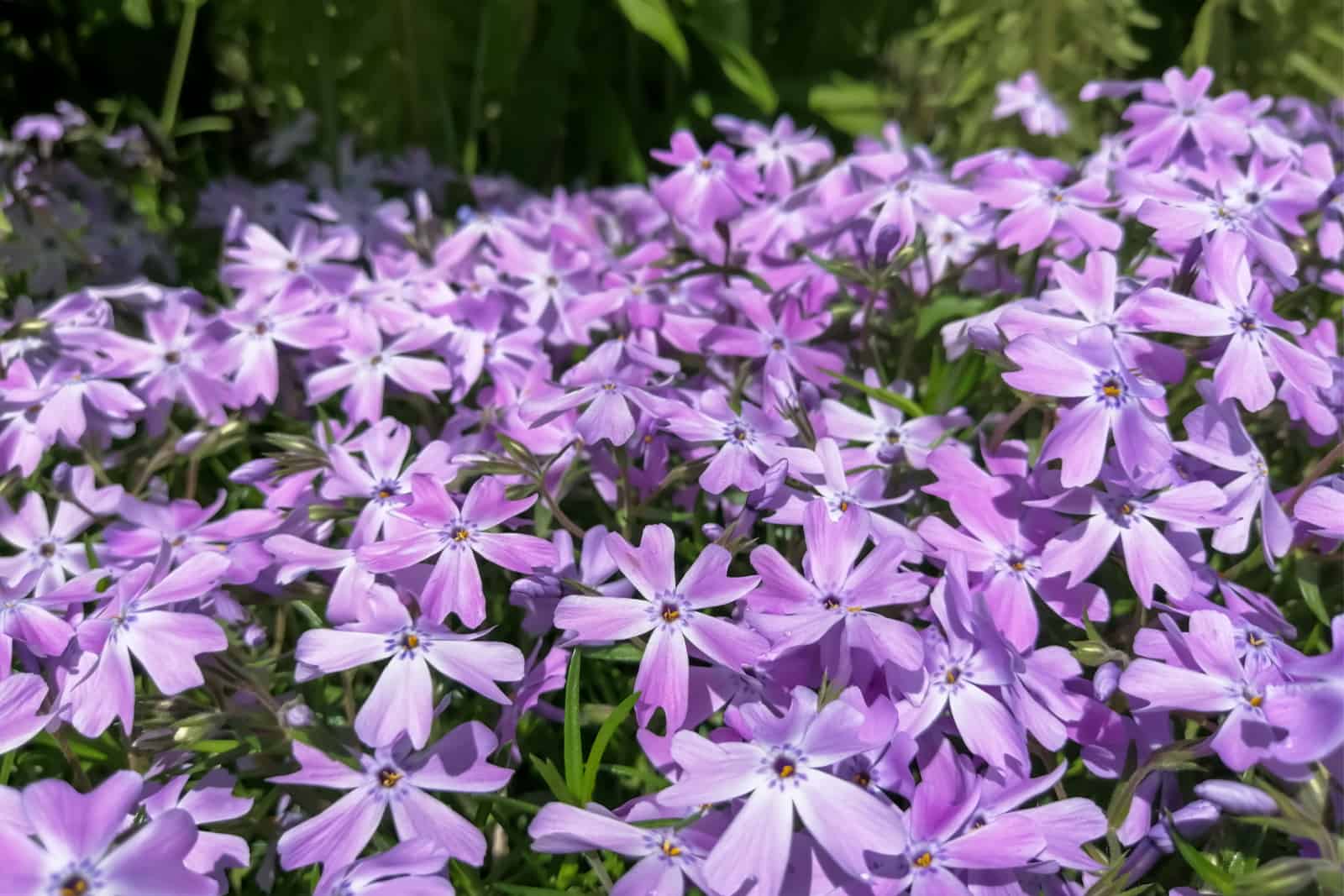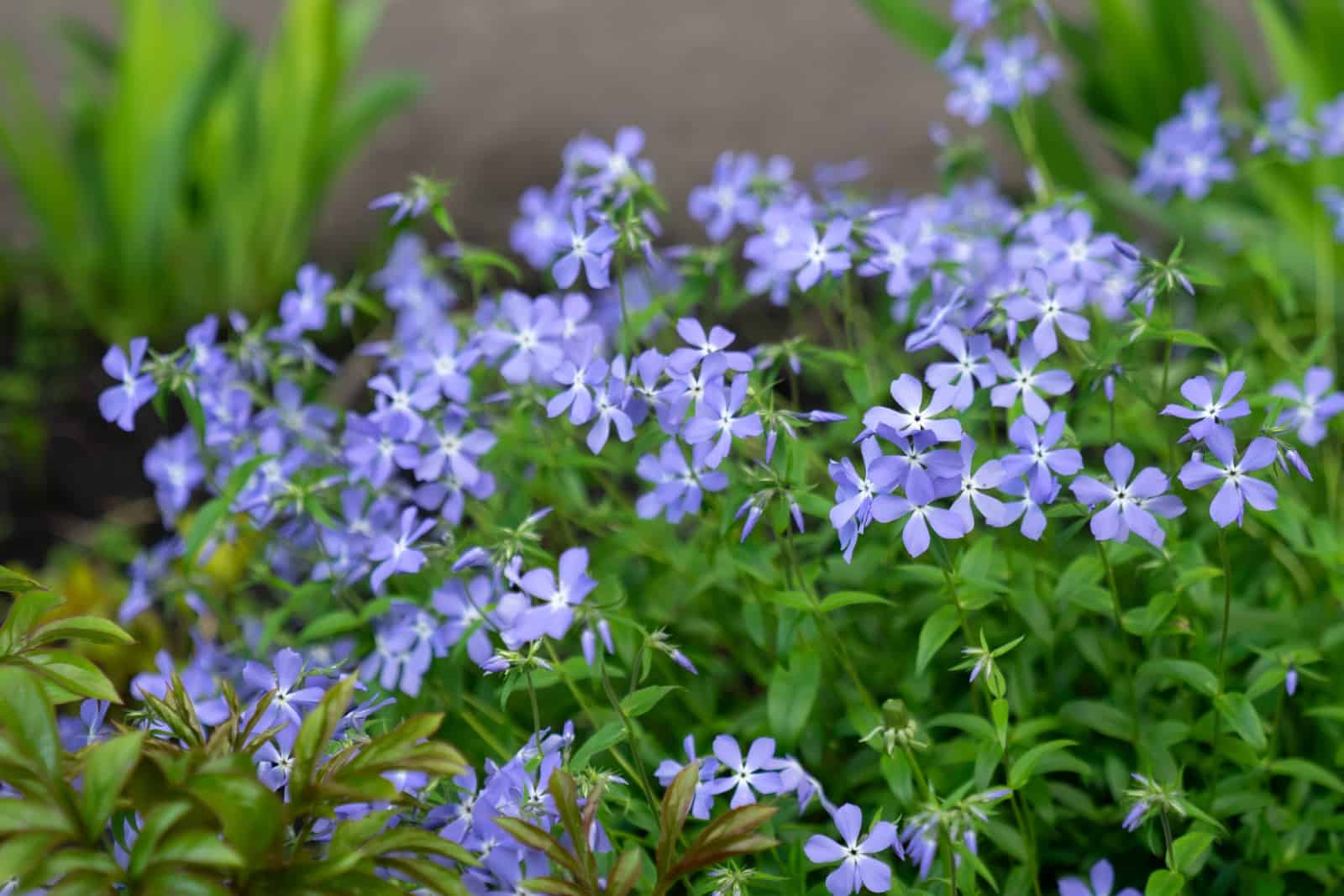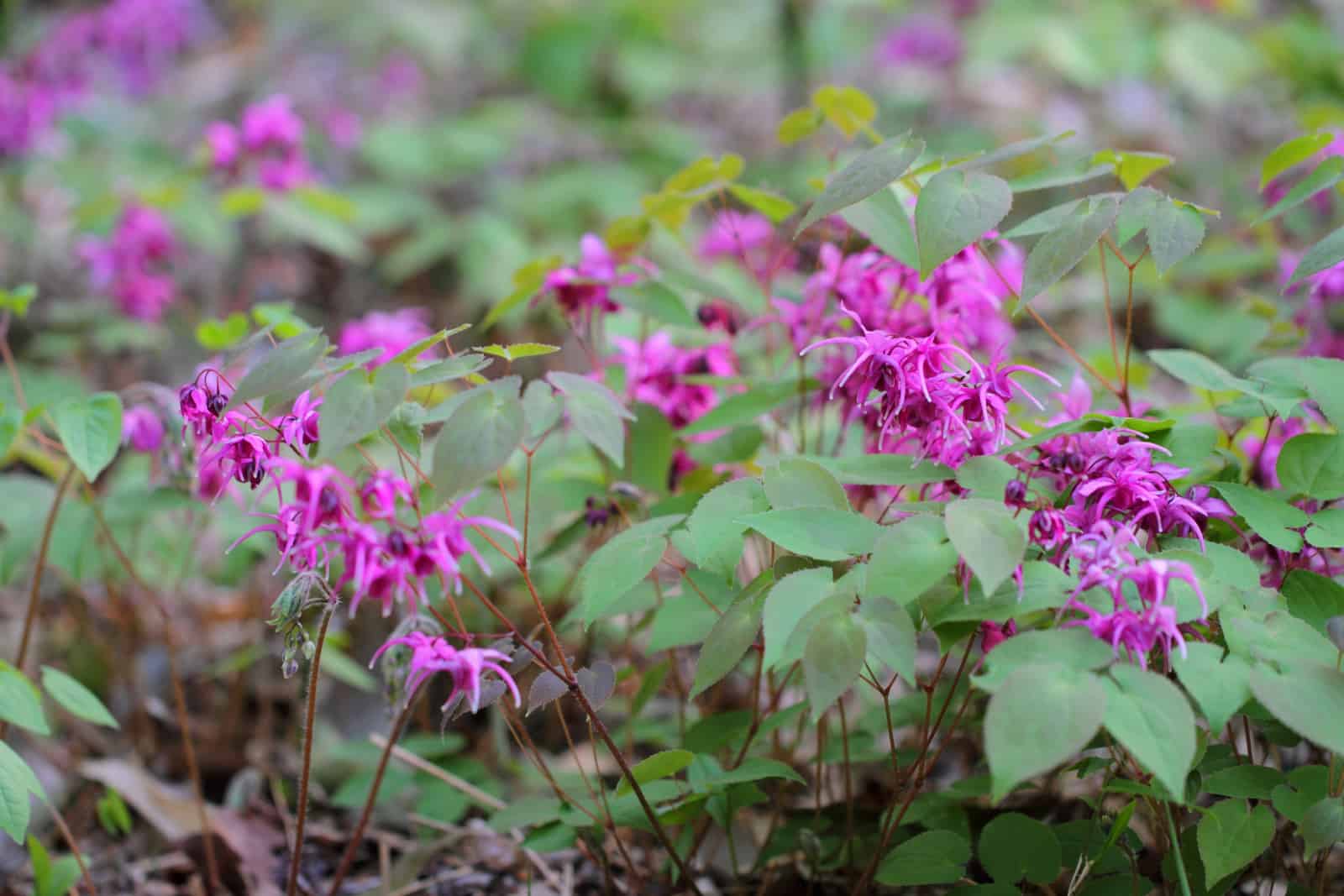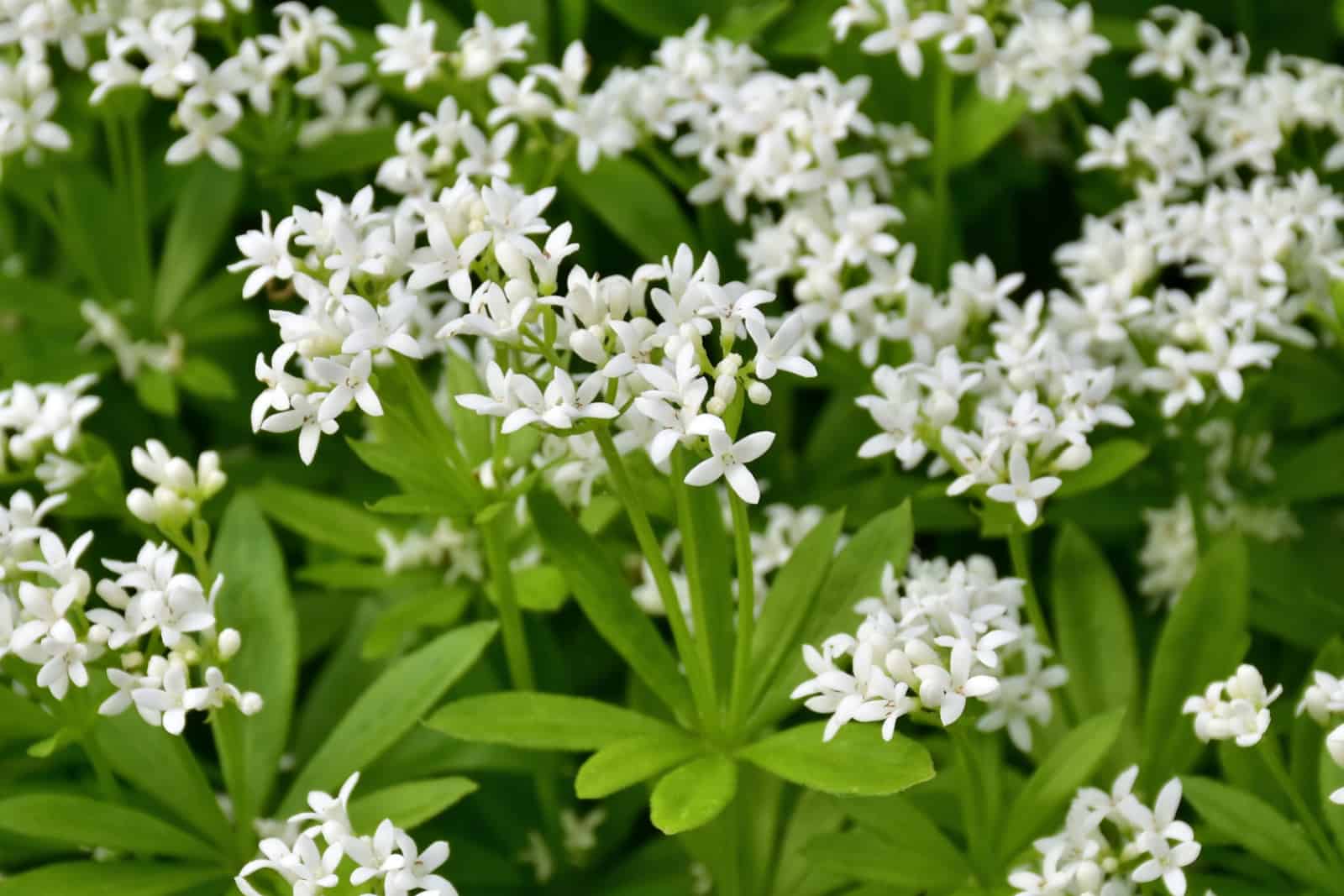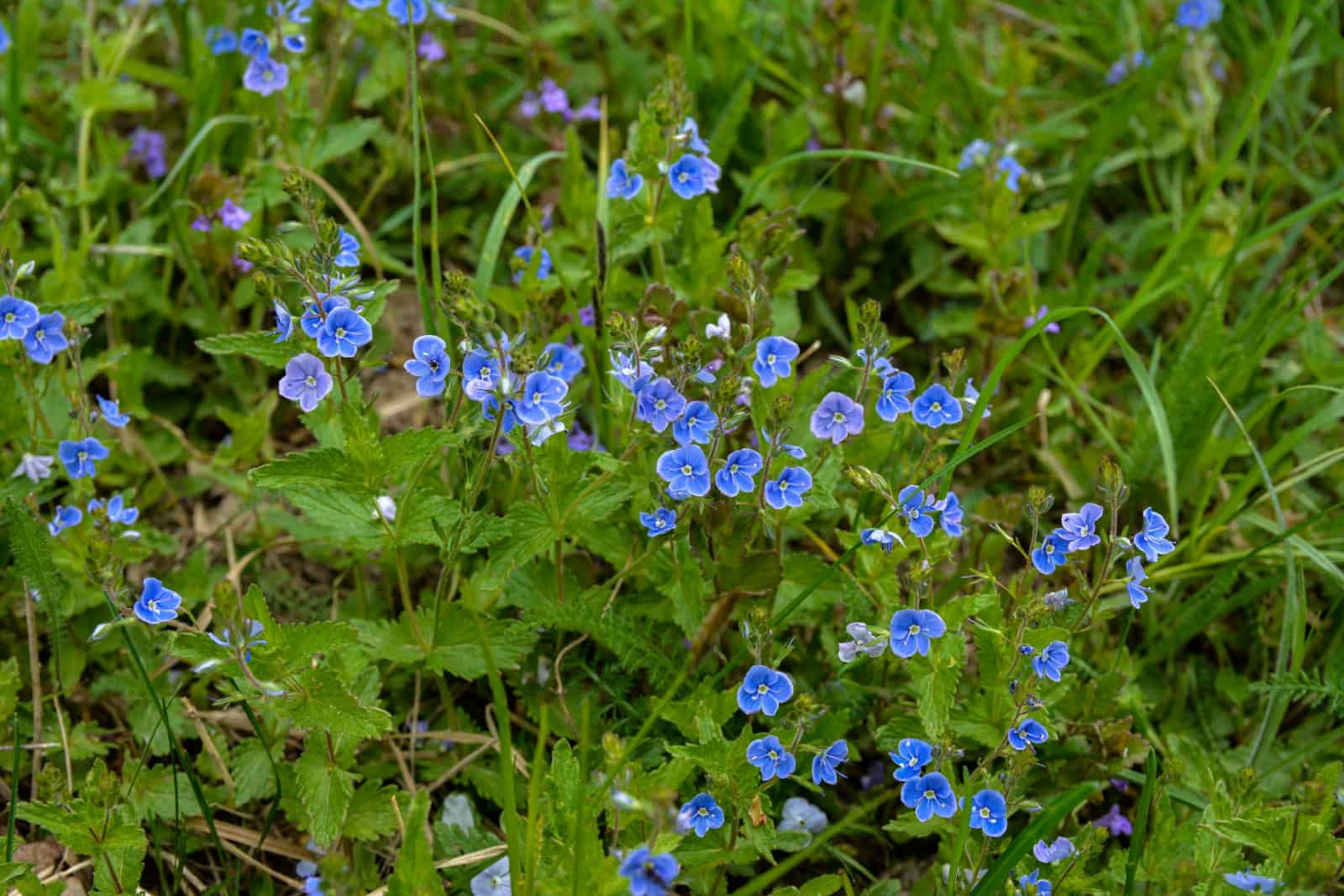If you are looking to add some aesthetic appeal to your outdoor space, then you should consider growing ground cover plants. With their variety of colors, textures, and fragrances, these plants can turn your backyard into a beautiful scene.
Not only are these lovely plants easy to take care of, but they can also help retain moisture, prevent soil erosion, and reduce weed growth!
Whether you’re looking to create a pathway, fill empty space, or add some color to your garden, there are plenty of ground cover options to choose from.
Let’s explore some creative ground cover ideas to help you make the most of your landscape!
Ground Cover Plants For Landscaping
Ground cover plants are low-growing plants that can spread quickly and form a dense mat over the soil. These plants can be used to create a natural transition between different areas of the garden and completely transform your landscape.
You can also use them to prevent soil erosion, reduce weed growth, and fill out empty spaces in the garden.
Here are some great ideas for using ground cover plants in landscaping:
• Use ground cover plants around trees to prevent weed growth and create a natural border
• In areas that are challenging to mow, like slopes or shady regions, you can replace grass with ground covers
• Mass plant flowers in large areas to achieve a more colorful and vibrant landscape
• Combine tall plants with low-growing ones to accentuate the contrast and add a more interesting look to your yard (for instance, grow purple pampas grass with low-growing flowering plants)
• Grow an evergreen carpet for your pathway with specific ground cover plants
• Combine different ground cover plants with unique flowers and fragrances to provide a beneficial habitat for insects and wildlife
Luckily, there are many different types of ground cover plants that you can grow – from perennials with lovely tiny flowers to evergreen plants with dense foliage.
I must also mention that you should take into consideration the region you live in, the climate, as well as the soil type and sun exposure when choosing plants. You can’t grow sun-loving ground covers in shady areas of your yard.
Carefully inspect the growing requirements of the plant you want to grow, and make sure that you can provide them with proper growing conditions!
Check out: 15 Easy DIY Landscaping Ideas And Styles To Spruce Up Your Yard
Low-maintenance Ground Cover Plants
Let’s start our list with some low-maintenance ground cover plants. Some of these plants don’t require any care once established. Even though they might not require special plant care, these plants still look absolutely stunning.
Here are our top picks for low-maintenance ground cover plants:
• Creeping thyme – the low-growing type of thyme that produces small, rounded foliage and purple flowers with mesmerizing fragrances. Suitable for ground covers, rock gardens, living walls, raised beds, etc. Can tolerate different soil conditions. Thrives in full sun to partial shade.
• Clover – a nitrogen-fixing plant often grown on lawns or as a ground cover. Prefers to grow in sunny locations and well-draining soil. In late spring and early summer, it exhibits lovely pink and white flowers. Ideal for areas that are difficult to mow or water.
• Moss – non-flowering plant that has characteristic lush and dense growth. It grows well in acidic soil and can be used as a ground cover in areas where grass won’t grow. This plant prefers moist environments and can be used to prevent soil erosion.
• Sedum – rare succulent plant that is used as a ground cover. Known for thriving in various soil conditions with little to no watering. Once established, sedum exhibits a variety of colors and textures. Prefers full sun to partial shade.
• Creeping Jenny – low-growing plant with unique bright green leaves that grow densely and provide carpet-like coverage in the yard. Can grow fine in partial shade, but it can also adapt to full sun exposure. It should be monitored carefully as it tends to get invasive.
Ground Cover Plants For Shaded Gardens
If you are looking for some plants to fill out the dark areas in your garden, then you have come to the right place! Not every garden will have perfect sun exposure, which is completely normal.
Don’t worry, there are lots of different plants that can thrive in full to partial shade. Some of these are also flowering plants that can really brighten and add some color to dark corners of your garden.
You can check out these shade-loving perennial plants, or you can grow some ground cover plants for shady gardens – the choice is yours!
Let’s see what ground cover plants can thrive in full to partial shade:
• Bugleweed – low-growing ground cover plant that produces green, bronze, or purple leaves. In the spring, pretty blue or purple flowers appear as well. It prefers partial shade to full sun. Thrives in well-draining and moist soil. Grows best in zones 4-9.
• Ice plant – even though the name might suggest that this plant can endure low temperatures, it can grow in zones 5 to 10. It is a drought-tolerant plant with unique daisy-like flowers in shades of pink, purple, yellow, and orange. Its fleshy leaves are covered in tiny glistening hairs that give the plant a frosty appearance, hence the name.
• Asiatic jasmine – evergreen plant with glossy dark-green leaves and small, white or yellow, fragrant flowers. Prefers to grow in partial to full shade. Thrives in well-draining soil. Grows best in zones 7 to 9.
• Wild ginger – a low-growing plant that produces heart-shaped leaves with unique textures and colors. Its reddish-brown flowers bloom close to the ground in early spring and are not very showy. The plant prefers partial to full shade, as well as moist, well-draining soil. Grows in zones 4-8.
Other plants that can grow in shaded areas:
• Creeping juniper (zones 3-9)
• Vancouveria (zones 5-8)
• Basket of gold (zones 4-7)
• Creeping phlox (zones 3-9)
• Sweet woodruff (zones 4-9)
• Dragon’s blood (zones 3-8)
• Japanese pachysandra (zones 4-8)
• Bishop’s hat (zones 5-8)
• Bunchberry (zones 2-6)
Ground Cover Plants For Sunny Gardens
If your garden is exposed to full sun during the day, you must find plants that can endure that much sun exposure. Luckily, there are numerous ground cover plants that don’t mind the excessive sunshine!
Here are some of the easiest plants to grow in full sun:
• California lilac – otherwise known as Ceanothus, this is an evergreen shrub that produces beautiful blue flowers in spring and summer. The shrub should be pruned after blooming to maintain a certain shape. Prefers well-draining soil and regular watering, although it can endure some drought.
• Plunbago – low-growing shrub that also produces prominent blue flowers during summer. It can tolerate some shade, though it prefers full sun. Needs watering during hot and dry periods. Should be pruned in early spring or late winter to encourage new growth.
• Common manzanita – also called Arctostaphylos manzanita, it’s a slow-growing evergreen shrub that exhibits unique reddish-brown bark, and small bell-shaped flowers in the spring. Once established, it doesn’t require much watering. Prefers full sun but can tolerate some shade.
• Miniature daisy – low-growing perennial that produces tiny, white, daisy-like flowers during summer. Thrives in well-draining and moist soil. Loves full sun exposure, but can endure some shade. Requires regular watering. Deadheading can encourage more blooms. Pruning is required in the fall to encourage new growth the next season.
Other plants that can grow in full sun:
• Rockspray cotoneaster (zones 5-7)
• Blue star creeper (zones 6-9)
• Silver carpet (zones 4-8)
• St. John’s Wort (zones 5-9)
• Mountain sandwort (zones 4-8)
• Snow in summer (zones 3-7)
• Golden storksbill (zones 4-9)
• Irish moss (zones 4-8)
Ground Cover Vines
Ground cover vines are plants that have climbing or trailing growth habits, and are often used to cover the ground or a vertical structure. Most of these are typically low-growing and spread quickly, which allows them to form a thick carpet-like covering.
Vining plants should be monitored carefully as some species tend to get invasive and entangled. If you want to redirect their growth and keep them from tangling, you should provide them with a trellis or other structural support.
Remember to prune them regularly to keep them under control and encourage new growth for the next season.
Here are our top picks:
• Virginia creeper – fast-growing vining plant that is relatively hardy. It produces vibrant green foliage that turns deep red in the fall, making it a great choice for adding autumn color to your garden. Thrives in well-draining soil. Prefers full sun to partial shade. Can grow up to 50 feet long if supported properly.
• English ivy – popular ground cover vine that produces somewhat glossy deep-green leaves. Often used for erosion control. Thrives in partial to full shade. Prefers growing in well-draining soil. It can be trained to stay low on the ground or climb trees and walls. Can get invasive.
• Honeysuckle – sweet-smelling ground cover vine which produces fragrant flowers that hummingbirds and pollinators absolutely love. Needs moist and well-draining soil to grow and thrive. Tolerates both full sun and partial shade. Can get invasive.
• Creeping fig – otherwise known as Ficus pumila, it’s a fast-growing vining plant that can be used for covering walls or other structures. It produces small heart-shaped leaves with a vibrant green color. Likes well-draining soil and partial to full shade. Can grow up to 15 feet long with a sturdy support structure to climb.
Other ground cover vining plants:
• Clematis (zones 4-9)
• Vinca minor (zones 4-9)
• Hedera helix ‘Needlepoint’ (zones 6-10)
• Sweet potato vine (zones 9-11)
Perennial Ground Cover Plants
If you don’t want to bother planting ground cover every year, consider growing some perennial ground cover plants. These will come back year after year and save you the trouble of planting again!
Some of the abovementioned plants, such as Creeping thyme, Creeping jenny, and Sedum, are all perennials. But if you are not interested in those, here are some other options:
• Creeping phlox – sometimes it can be hard to distinguish between Creeping thyme and Creeping phlox, but phlox has needle-like leaves and lots of blue and purple flowers. It is a hardy plant that grows best in well-draining soil and prefers full sun to partial shade. Ideal for ground cover, rock gardens, and borders. Occasional watering required during dry periods.
• Hosta – shade-loving perennial that exhibits large attractive leaves and tall spikes of purple or white flowers. Thrives in well-draining and nutrient-rich soil. Requires regular watering, especially during hot and dry periods.
• Daylilies – low-maintenance ground cover plants that can tolerate a variety of growing conditions. They produce an abundance of colorful flowers in orange, pink, red, and yellow. They thrive in well-draining soil and full sun to partial shade. Regular watering required during dry spells. Can benefit from occasional fertilization.
• Mazus – low-growing ground cover plant that spreads quite quickly and produces lots of small blue or purple flowers in the early spring. Prefers moist soil and full to partial shade. The plant should be pruned occasionally to control its growth.
Our Top Picks (With Pictures)
If you want to get the whole idea of a specific ground cover plant, here are detailed descriptions along with beautiful pictures.
Let’s dive in!
1. Creeping Thyme
We already mentioned creeping thyme as a low-maintenance plant, but it is simply so good that we have to mention it again in more detail!
This herbaceous perennial plant is a low-growing ground cover that spreads quickly and produces dense mats of tiny aromatic leaves. Among this lush foliage, you might be able to spot some tiny white, purple, and pink flowers.
Creeping thyme is ideal for ground cover, rock gardens, borders, pathways, raised beds, etc. It is recommended for gardens with low pollinator populations because these fragrant flowers and leaves can attract lots of pollinators.
2. Creeping Phlox
Following our favorite is its doppelganger, Creeping phlox. This is also a herbaceous plant that grows somewhat larger than thyme. It produces masses of colorful flowers in the spring and has attractive foliage the rest of the year.
Once established, Creeping phlox doesn’t require much watering. It grows best in loam, sand, or even rocky soil.
If you want to grow one of these as a ground cover plant in your garden, pick a spot that receives plenty of sunlight. Don’t panic if your entire garden isn’t exposed to the sun as this creeper can also grow in partial shade.
3. Periwinkle
Periwinkle is an evergreen ground cover plant that spreads rather quickly. It produces glossy leaves and small flowers that range in color from blue to lavender.
This lovely plant can grow in partial shade, but it can also tolerate full sun exposure. Periwinkle thrives in well-draining soil.
Established plants are drought-tolerant, although occasional watering is required during dry spells. If you’re not careful, these plants can become invasive due to their aggressive nature, so prune them regularly!
4. Bishop’s Hat
The Bishop’s hat, often referred to as barrenwort, fairy wings, or horny goat weed, is a low-growing plant that features sweet little flowers on top of pointed green leaves with crimson edges.
It gets its common name from the distinctive shape of its leaves, which are often compared to the hats worn by bishops in medieval times.
This plant prefers partial to full shade and moist, well-draining soil that’s rich in organic matter. It is considered a slow-growing plant and may take a few years to fully establish, but once it does, it forms a dense carpet of foliage that helps to suppress weeds.
5. Sweet woodruff
Sweet woodruff, otherwise known as Galium odoratum, is a low-growing perennial plant often used as a ground cover due to its spreading habits and alluring foliage. The plant produces bright green, lance-shaped leaves with rough textures.
In late spring and early summer, clusters of small, white, star-shaped flowers with a delicate scent are produced.
Sweet woodruff prefers a partially shaded location with moist, well-draining soil. It is tolerant of a wide range of soil types but does best in a slightly acidic environment.
Gallium odoratum is also used in traditional herbal medicine because of its anti-inflammatory and sedative properties. Dried leaves and flowers are often used to make infusions or teas.
However, it should be used with caution by those who are taking anticoagulant medicine since the plant contains coumarin, a natural blood-thinning compound.
6. Veronica
Veronica, also known as Speedwell, is a multipurpose perennial plant that produces spikes of flowers in pink or blue. These flowers appear in the summer and are great for attracting pollinators.
Veronica spreads rather quickly, so your garden will be filled with these lovely flowers and lance-shaped, glossy green leaves in no time!
This plant prefers growing in full sun and well-draining soil. It is drought-tolerant when established.
7. Pachysandra
Pachysandra is a low-growing, evergreen, ground cover plant that is native to Asia and North America. Since it can grow in full sun to partial shade, it is often used as a ground cover for shaded gardens.
The plant has unique, glossy, dark green leaves that spread quickly and form a dense mat. In the spring, you might be able to spot some small white flowers.
Pachysandra prefers well-draining soil that is rich in organic matter. It can tolerate a range of soil types, from sandy to clay, but it does not do well in wet or waterlogged soil. Occasional watering during dry periods is required.
Be careful as this plant can get invasive in some areas and end up choking other plants nearby. This is why pruning it back and removing any stray shoots is necessary.
I hope you enjoyed this article.
Until next time!

